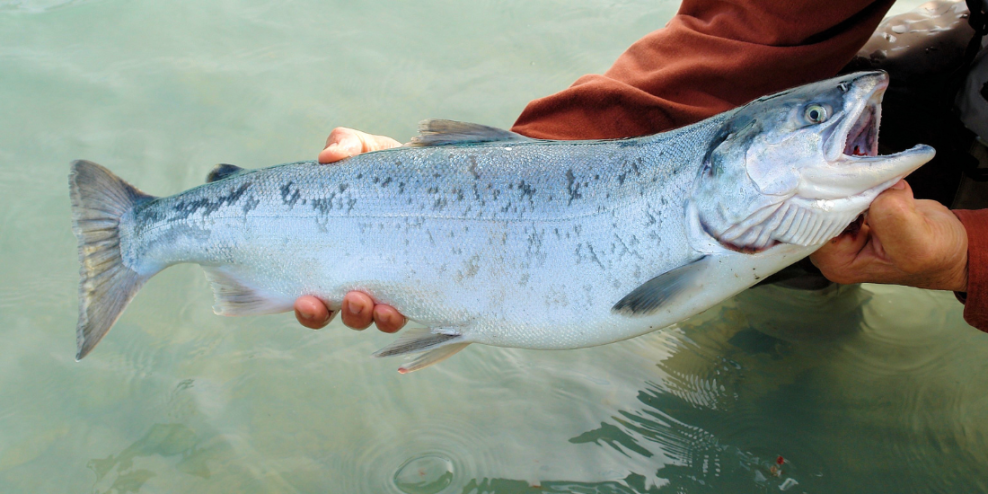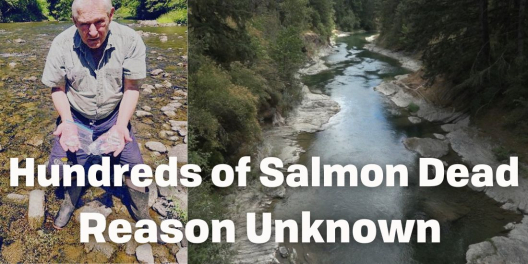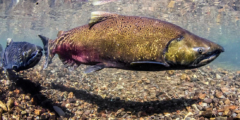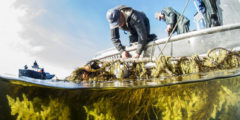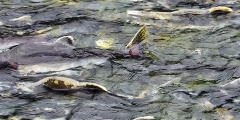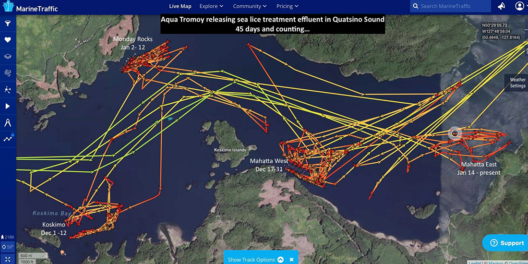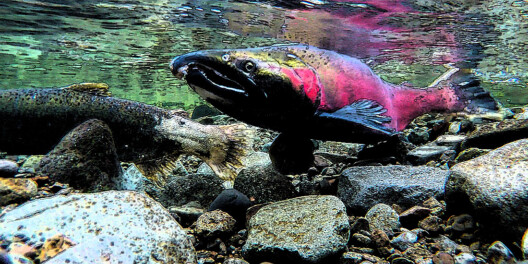It’s not unusual for industry and industry watchdogs to be at odds over a government report.
But a recent report from Fisheries and Oceans Canada (DFO) has critics questioning the Ministry’s bias.
A just-released DFO report examining sea lice infestations among juvenile wild salmon has sparked controversy.
In contrast to reams of independent research from top Canadian universities, the DFO report found sea lice infestations among juvenile wild salmon aren’t strongly tied to factory fish farms.
“This report is just one of many in the past few years that shows DFO has a pro-industry bias,” said Stan Proboszcz, science advisor for the Watershed Watch Salmon Society.
One thing that has critics scratching their heads is the timing of the report’s release. The DFO study was internally approved last August but wasn’t released until this month.
Critics are questioning the timing because the delayed release just so happens to be right before the final decision on fish farms in the Discovery Islands, which could come any day now.
Using Access to Information and Privacy (ATIP), Watershed Watch acquired DFO documents that show internal meddling in the timing of the report’s release.
“They [DFO] suppressed the finalized report for five months until January 2023 and released it right before the upcoming final decision on fish farms in the Discovery Islands,” Watershed Watch said in a news release.
In contrast to numerous independent studies, the DFO report finds “minimal risk” to wild sockeye salmon from fish farm-related diseases.
It claims no “statistically significant association” exists between fish farms and infestations among migrating juvenile wild chum and pink salmon.
In other words, DFO says fish farms can’t be blamed for sea lice outbreaks in wild fish in four areas on the coast: Clayoquot Sound, Quatsino Sound, Discovery Islands, and the Broughton Archipelago.
Sea lice occur naturally in the Pacific, but previous reports have found they tend to thrive in fish farms because of the high concentration of fish.
The salmon farming industry is seizing on the report as proof that fish farms aren’t spreading sea lice to wild fish. The BC Salmon Farmers Association (BCFSA) quickly accepted the study’s conclusions.
BCFSA executive director Brian Kingzett told chekNEWS, “What they found, which is very significant, is that they could not find an association that was significant between the levels of sea lice on farmed salmon and the levels that we see on out-migrating juvenile salmon.”
But these findings are deeply flawed and fly in the face of credible independent research, says Watershed Watch’s Proboszcz.
Along with the suspicious timing, the report raises questions about independent research. The DFO report relies primarily on self-reporting from the aquaculture industry itself.
“There is an incredibly large body of independent scientific research demonstrating the link between fish farms and sea lice on wild salmon. Scientists from Simon Fraser, the University of Toronto, and the Pacific Salmon Foundation have published on this topic for years,” Proboszcz told VanIsle.News.
Proboszcz added that the report notes a significant uptick in sea lice outbreaks since 2013 in the affected areas.
“There are some serious credibility and objectivity problems with this report,” he said.
Proboszcz also questions the study’s methodology and data.
The DFO study relies mainly on self-reported sea lice data from the fish farm industry. It includes contributions from 15 scientists, mainly from DFO’s aquaculture regulatory science and management division. Among them is Dr. Simon Jones, a past recipient of the Research Award of Excellence from the Aquaculture Association of Canada.
Watershed Watch is not the only group questioning the findings and data.
The First Nation Wild Salmon Alliance (FNWSA) says that the numbers released by the DFO don’t add up.
The industry “under-reports their lice by up to 50 percent at times when their count is audited by the DFO,” said the FNSWA in a release.
FNWSA says that’s “why industry data on sea lice on wild salmon never aligns with research from the top universities and research stations of Canada.”
DFO’s sea lice report was supposed to guide Minister Joyce Murray’s pending decision on the fate of fish farms in the Discovery Islands.
Last June, Murray committed to consulting with First Nations and current licence holders on the future of salmon aquaculture licences in this area before making a final decision in January 2023.
This came after an April 2022 Federal Court decision. That decision sided in favour of industry and against former DFO Minister Bernadette Jordan’s order to remove all fish farms from the Discovery Islands. The decision cited a lack of procedural fairness.
Watershed Watch’s ATIP also reveals a big divide at DFO between the report’s minimizing of sea lice impacts and what the Minister’s Office is saying to the aquaculture industry about salmon farms in the Discovery Islands.
DFO Minister Murray raised numerous concerns, including “uncertainties related to cumulative effects,” the “importance of the Discovery Islands for migrating juvenile salmon,” and the “depleted state of wild pacific salmon.”
DFO study noted other research concluding there were links between lice on farms and wild fish being infected.
“Enough is enough. An independent and rigorous investigation is needed to clean house of DFO’s bias favouring the salmon farming industry,” said Proboszcz.
The Minister even admits the need for a more balanced approach to this issue.
“As Minister, I need to consider more broad social, economic and cultural factors relating to general public concern about potential impacts of salmon aquaculture into account when making decisions under the Fisheries Act.”
So the Minister is on record about various factors, but whether she will actually consider them is the big question.
The DFO’s decision on aquaculture in the Discovery Islands could come any day now.
Is the release of this suppressed report an indication of the upcoming decision?
Will the decision be biased toward the fish farm industry, like the report was?
Most importantly, will it consider the best interest of wild salmon? Or First Nations communities? On these points, the DFO’s track record is not promising.
